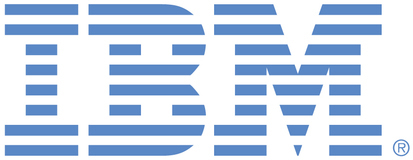
This portal is to open public enhancement requests against IBM Power Systems products, including IBM i. To view all of your ideas submitted to IBM, create and manage groups of Ideas, or create an idea explicitly set to be either visible by all (public) or visible only to you and IBM (private), use the IBM Unified Ideas Portal (https://ideas.ibm.com).
Shape the future of IBM!
We invite you to shape the future of IBM, including product roadmaps, by submitting ideas that matter to you the most. Here's how it works:
Search existing ideas
Start by searching and reviewing ideas and requests to enhance a product or service. Take a look at ideas others have posted, and add a comment, vote, or subscribe to updates on them if they matter to you. If you can't find what you are looking for,
Post your ideas
Post an idea.
Get feedback from the IBM team and other customers to refine your idea.
Follow the idea through the IBM Ideas process.
Specific links you will want to bookmark for future use
Welcome to the IBM Ideas Portal (https://www.ibm.com/ideas) - Use this site to find out additional information and details about the IBM Ideas process and statuses.
IBM Unified Ideas Portal (https://ideas.ibm.com) - Use this site to view all of your ideas, create new ideas for any IBM product, or search for ideas across all of IBM.
ideasibm@us.ibm.com - Use this email to suggest enhancements to the Ideas process or request help from IBM for submitting your Ideas.
A client explained to me that exit points were necessary for blocking certain types of access in real time, rather than analyzing a log file retrospectively, after the potential damage was done. Lack of exit points inhibited their adoption of SSH and tools based on SSH.
The CAAC has reviewed this requirement and recommends that IBM view this as a “nice to have” low priority feature. As KristerK points out below, work-arounds have already been documented by IBM.
Background: The COMMON Americas Advisory Council (CAAC) members have a broad range of experience in working with small and medium-sized IBM i customers. CAAC has a key role in working with IBM i development to help assess the value and impact of individual RFEs on the broader IBM i community, and has therefore reviewed your RFE.
For more information about CAAC, see www.common.org/caac
For more details about CAAC's role with RFEs, see http://www.ibmsystemsmag.com/Blogs/i-Can/May-2017/COMMON-Americas-Advisory-Council-%28CAAC%29-and-RFEs/
Nancy Uthke-Schmucki - CAAC Program Manager
Due to processing by IBM, this request was reassigned to have the following updated attributes:
Brand - Servers and Systems Software
Product family - Power Systems
Product - IBM i
Component - Open Source, PASE
Operating system - IBM i
Source - None
For recording keeping, the previous attributes were:
Brand - Servers and Systems Software
Product family - Power Systems
Product - IBM i
Component - Security
Operating system - IBM i
Source - None
We use a layered approach to security which includes both object level security and exit points. For us, the advantage of the exit point is to allow custom controls, so as jlhall touched on below, the exit point would allow for constraints such as allowing an *allobj profile (or any other permitted user/group) to connect only from specific ip addresses and/or time frames. So, the exit point would allow a user from SSHUSER02 group access during working hours from a permitted local ip list but deny access during off hours. I had forgotten about activating syslog for the extra detail, so thank you for the reminder/feedback.
While correct object authority is vital, it may not be the solution for this item. It doesn't allow an organization to limit remote access to certain users or based upon other conditions. For instance, we use exit points on our FTP server to prohibit access by any user with any special authority unless the remote IP address is in the local network. This allows us to restrict *ALLOBJ users from using remote access. If you're relying on object authority alone, there is a potential exposure if an *ALLOBJ user's password has been compromised.
Missed the logging part of this RFE. As openSSH was original created for unix system, you need to enable syslog to get the logs for SSH access: https://www.ibm.com/support/pages/syslog-syslogd-pase-ibm-i
Exit point is IBM i platform specific, while SSH is an open source product for several different platform. So why not use SSH built in functions to restrict access by user or usergroups?
https://www.ibm.com/support/pages/allowing-or-denying-access-ibm-i-secure-shell-daemon-sshd-using-group-profiles
Hello Jeff,
After having had a look at your RFE, I did give it a try out of curiosity. After all the proof of the pudding is in the eating.
When starting the *SSHD server with the STRTCPSVR command and afterwards starting a session with IBM i ACS => SSH Terminal I can signon without leaving a trace in the history log.
The SSH Teminal will kick off a job in my case 049375/QSECOFR/QP0ZSPWP, when doing a dsplog job(049375/QSECOFR/QP0ZSPWP) I get no result. So I think this RFE needs some more attention. It is not just an exit point only question I think. Please let me know if you agree with this.
Greetings Rudi
Using exit-programs is a first defense but it will be a never ending fight… correct object authority is the way to go.